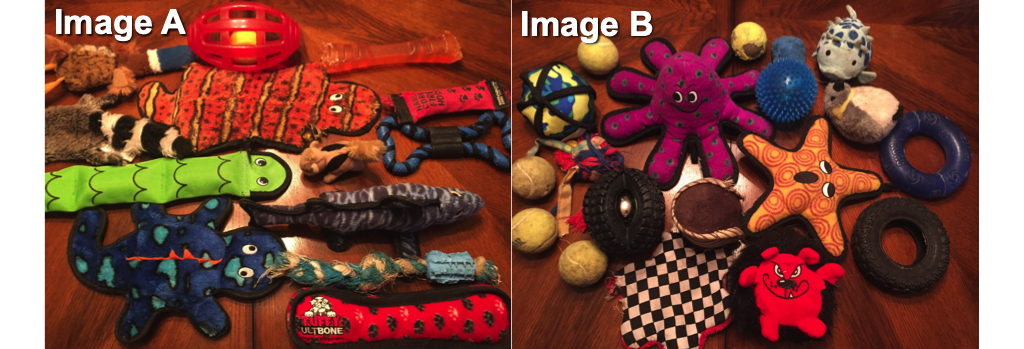10.2 Foliation and Rock Cleavage
How Foliation Develops
When a rock is acted upon by pressure that is not the same in all directions, or by shear stress (forces acting to “smear” the rock), minerals can become elongated in the direction perpendicular to the main stress. The pattern of aligned crystals that results is called foliation.
Foliation can develop in a number of ways. Minerals can deform when they are squeezed (Figure 10.5), becoming narrower in one direction and longer in another.
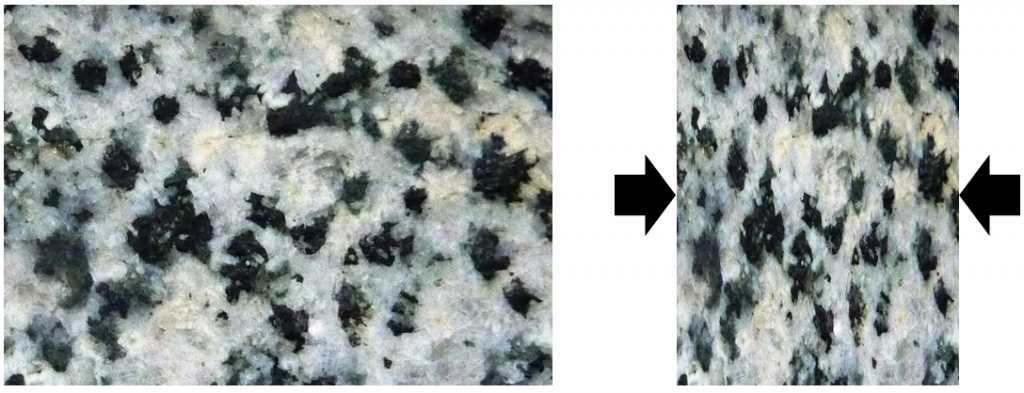
If a rock is both heated and squeezed during metamorphism, and the temperature change is enough for new minerals to form from existing ones, the new minerals can be forced to grow longer perpendicular to the direction of squeezing (Figure 10.6). If the original rock had bedding (represented by diagonal lines in Figure 10.6, right), foliation may obscure the bedding.

This is not always the case, however. The large boulder in Figure 10.7 in has strong foliation, oriented nearly horizontally in this view, but it also has bedding still visible as dark and light bands sloping steeply down to the right.
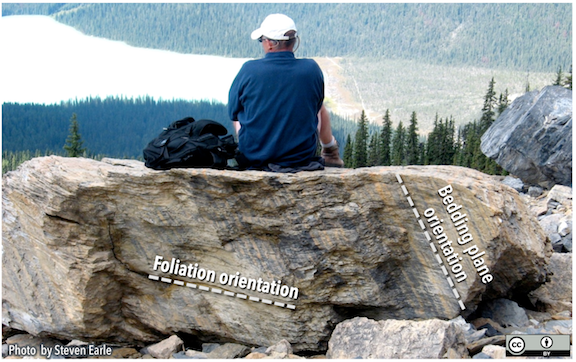
Foliation and Crystal Habit
Most foliation develops when new minerals are forced to grow perpendicular to the direction of greatest stress. This effect is especially strong if the new minerals grow in platy or elongated shapes. The rock in the upper left of Figure 10.8 is foliated, and the microscopic structure of the same type of foliated rock is shown in the photograph beneath it. Over all, the photomicrograph shows that the rock is dominated by elongated crystals aligned in bands running from the upper left to the lower right. The stress that produced this pattern was greatest in the direction indicated by the black arrows, at a right angle to the orientation of the minerals. The aligned minerals are mostly mica, which has a platy crystal habit, with plates stacked together like pages in a book.
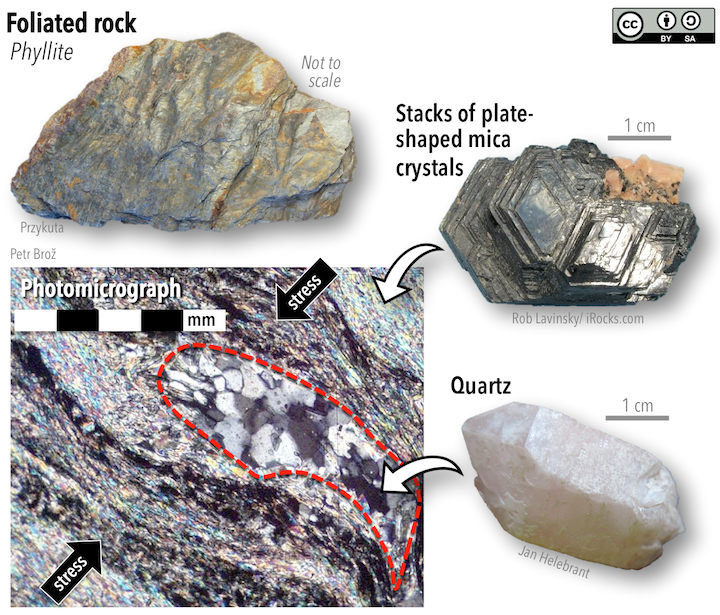
The zone in the photomicrograph outlined with the red dashed line is different from the rest of the rock. Not only is the mineral composition different—it’s quartz, not mica—but the crystals aren’t aligned. The quartz crystals were subjected to the same stress as the mica crystals, but because quartz grows in blocky shapes rather than elongated ones, the quartz crystals didn’t align themselves.
Even though the quartz crystals themselves are not aligned, the mass of quartz crystals forms a lens that does follow the general trend of alignment within the rock. This happens because the stress can cause some parts of the quartz crystals to dissolve, and the resulting ions flow away at right angles to the greatest stress before forming crystals again.
The effects of recrystallization in Figure 10.8 wouldn’t be visible without a microscope, but when larger crystals or large clasts are involved, the effects can be visible as “shadows” or “wings” around crystals and clasts. The rock in Figure 10.9 had a quartz-rich conglomerate as a parent rock. Differential stress has caused quartz pebbles within the rock to become elongated, and it has also caused wings to form around some of the pebbles (see the pebble in the dashed ellipse). The location of the wings depends on the distribution of stress on the rock (Figure 10.9, upper right).
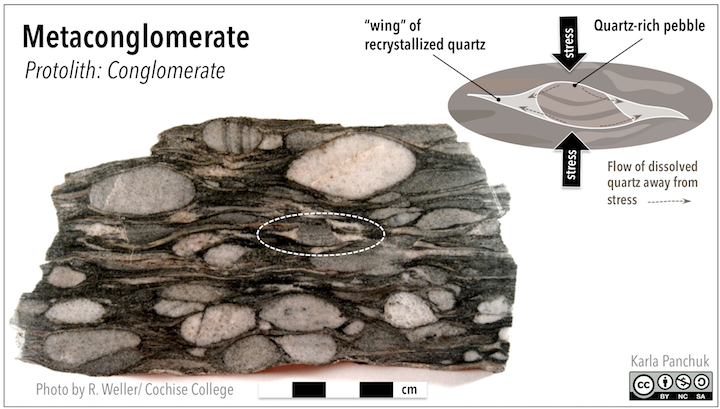
Foliation Controls How Rocks Break
Foliated metamorphic rocks have elongated crystals that are oriented in a preferred direction. This forms planes of weakness, and when these rocks break, they tend to break along surfaces that parallel the orientation of the aligned minerals (Figure 10.10). Breaks along planes of weakness within a rock that are caused by foliation are referred to as rock cleavage (or just cleavage if everyone in the conversation knows we’re talking about rocks, not minerals). This is distinct from cleavage in minerals because mineral cleavage happens between atoms within a mineral, but rock cleavage happens between minerals.

The mineral alignment in the metamorphic rock called slate is what causes it to break into flat pieces (Figure 10.11, left), and is why slate has been used as a roofing material (Figure 10.11, right). The tendency of slate to break into flat pieces is called slaty cleavage.

Rock cleavage is what caused the boulder in Figure 10.7 to split from bedrock in a way that left the flat upper surface upon which the geologist is sitting.
- Which set of arrows shows the direction force was applied that aligned these minerals?
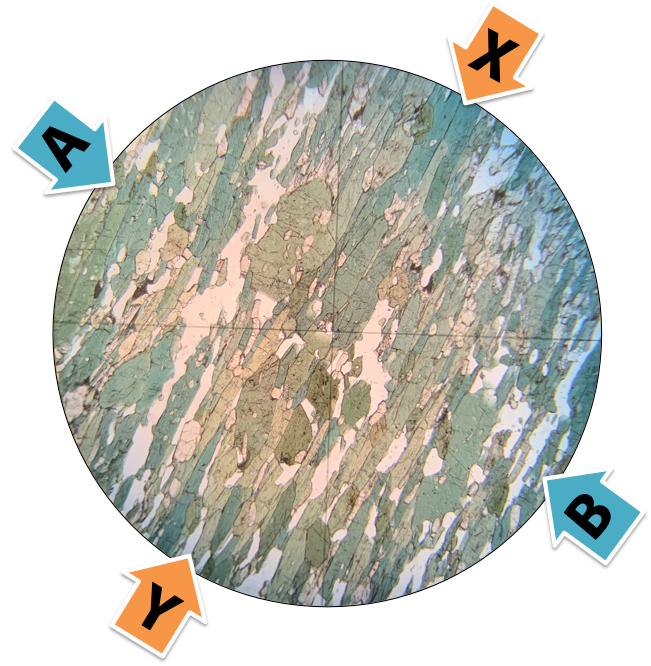
Foliated metamorphic rock amphibolite viewed in thin section under a microscope. - Arrows A & B
- Arrows X & Y
- If this rock broke, where would the break be more likely to happen?

Foliated metamorphic rock amphibolite viewed in thin section under a microscope. - Along a line between arrows A & B
- Along a line between arrows X & Y
- This rock is:

- Foliated
- Non-foliated
- This metamorphic rock is:
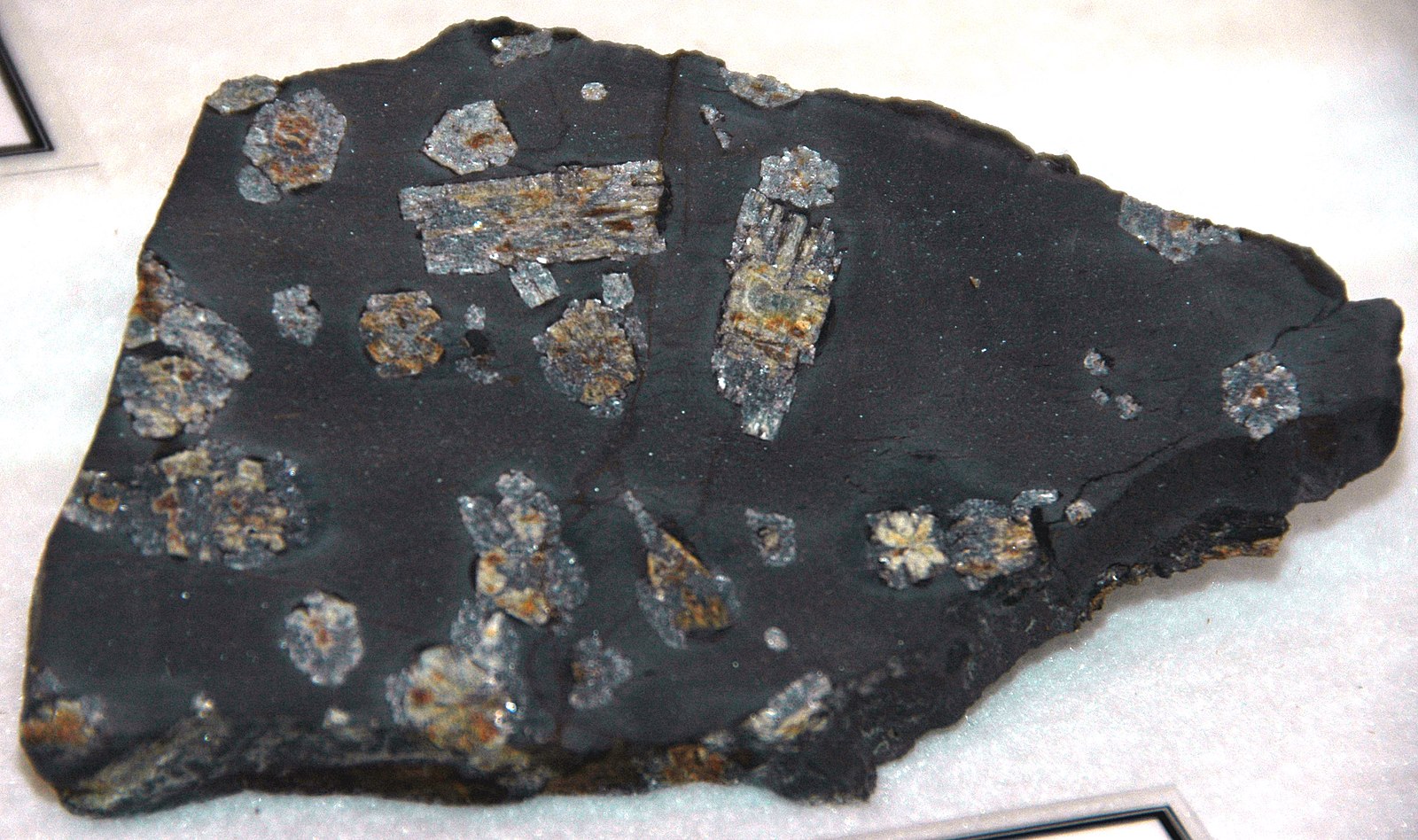
- Foliated
- Non-foliated
- This metamorphic rock is:
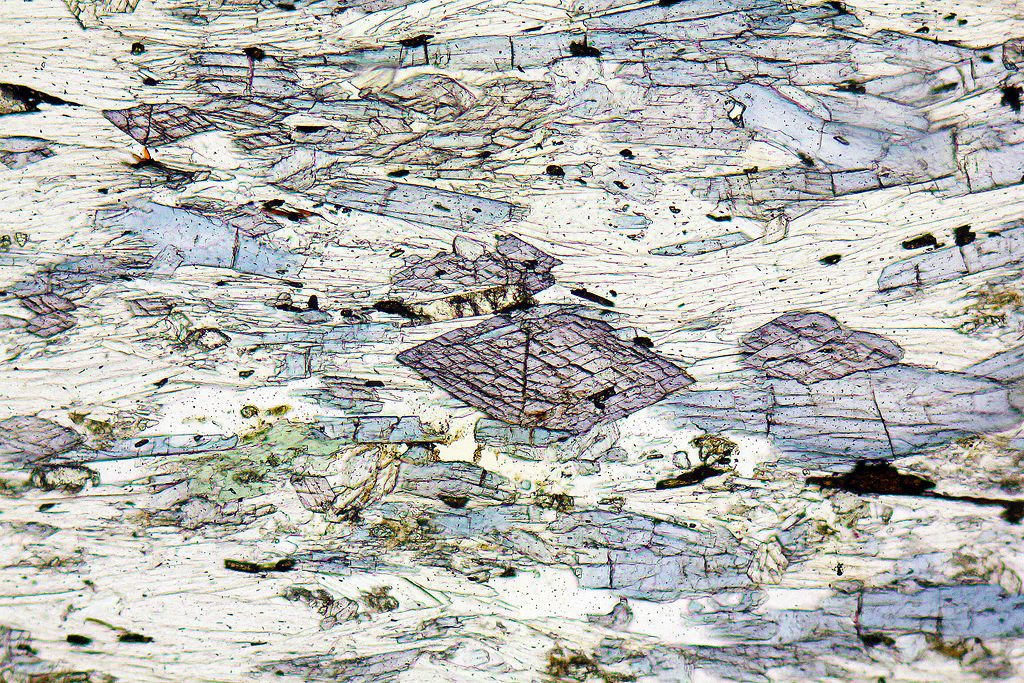
- Foliated
- Non-foliated
To check your answers, navigate to the below link to view the interactive version of this activity.
Concept Check: Summary of Foliation and Rock Cleavage
Fill in the blanks to complete the explanations of cleavage and foliation.
Rock cleavage is different from mineral cleavage. Cleavage in (hint: rocks or minerals?) refers to breaks that are controlled by the atomic arrangement within a crystal. In contrast, cleavage in (hint: rocks or minerals?) refers to breaks controlled by the arrangement of mineral crystals.
Whether a metamorphic rock is foliated or non-foliated will depend in part on how pressure was applied to the rock. When pressure is (hint: the same or not the same?) in all directions, foliation can develop. Foliation also requires that minerals are (hint: blocky or platy?) or (hint: elongated or stubby?) so that they can be aligned along their lengths.
You can use household objects to see for yourself why some crystal shapes permit foliation while others don’t. You can’t align the dog toys in Image (hint: Image A or B?) because none of them are longer in one direction than the other. On the other hand, the toys in Image (hint: Image A or B?) can be arranged to run more or less parallel to each other.
To check your answers, navigate to the below link to view the interactive version of this activity.
